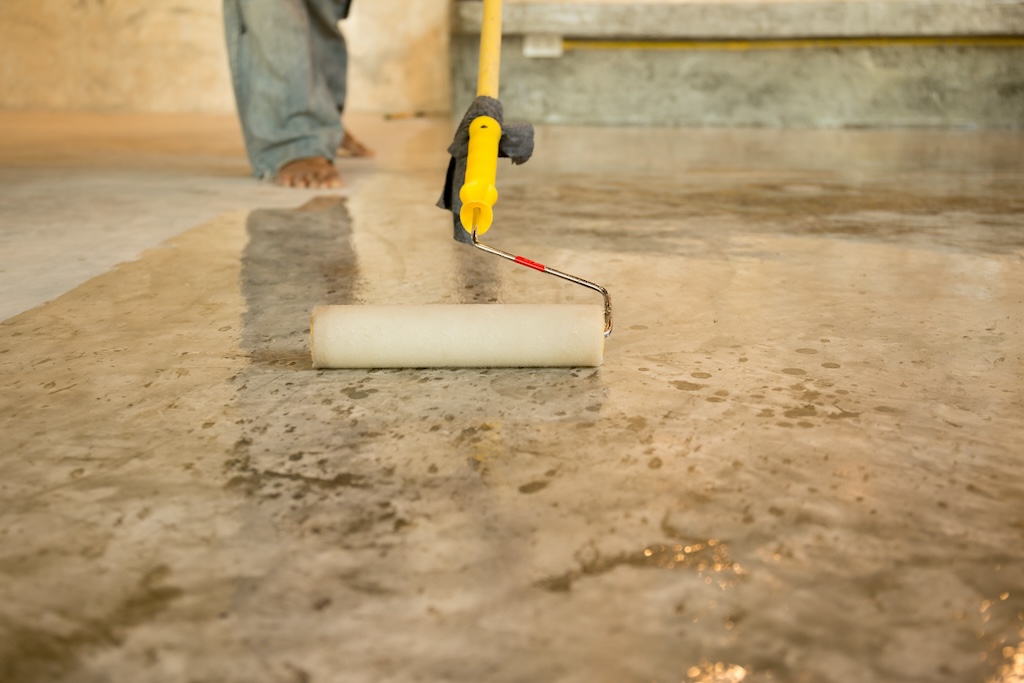Painting is not just about walls and ceilings; it often extends to unconventional surfaces, each presenting unique challenges and requiring specific techniques. From glass and fabric to brick and asphalt, painting unconventional surfaces can unleash new realms of creativity and functionality. It can transform everyday objects into works of art or functional pieces with a new lease on life. In this blog, we will explore various techniques to effectively paint these non-traditional surfaces, ensuring the best possible finish and longevity.
Painting on Glass
Glass painting requires paints that adhere well and remain transparent. Acrylic enamel paints are ideal for their durability and adherence. Surface preparation involves cleaning the glass thoroughly with alcohol or vinegar solution to remove any grease or residue. Using a primer specifically designed for glass can enhance paint adhesion, making the paint job last longer and resist peeling and fading. Additionally, consider experimenting with different painting techniques such as stippling, sponging, or using stencils to create intricate designs on glass surfaces.
Painting on Fabric
Fabric painting calls for paints that remain flexible and don’t crack. Fabric or acrylic paints mixed with a textile medium work well, creating a durable and washable finish. Prewashing the fabric without fabric softeners and ironing it before painting is essential to ensure an even application of paint. This preparation prevents the fabric from shrinking later on and helps the paint absorb into the fibers more effectively. Explore various fabric painting techniques such as freehand painting, block printing, or using fabric markers to achieve different textures and designs.
Painting on Brick
Brick is a porous material and requires sealing before painting. Use a primer designed for masonry to prevent moisture seepage and ensure even coverage. Acrylic latex paint is often recommended for its ability to breathe, allowing moisture to escape from the brick, preventing mold and mildew. A sealant can be applied after painting to preserve the color and protect against the elements. Consider adding a pop of color to your outdoor space by painting a mural or pattern on a brick wall to enhance its visual appeal.
Painting on Asphalt
Asphalt painting, often used for markings, requires highly durable and quick-drying paints. Acrylic latex or specialized asphalt paint is designed to withstand harsh weather and traffic. Cleaning and drying the surface thoroughly before application is crucial to avoid the paint peeling off. Applying a sealant over the paint can extend its life, especially in high-traffic areas. Explore different asphalt painting techniques such as line striping, stenciling, or using thermoplastic paints for long-lasting pavement markings.
Painting on Plastic
Plastic surfaces are non-porous and slick, making paint adhesion difficult. Using a primer specifically for plastic surfaces can aid in adhesion. Spray paints labeled for plastic are a good choice, offering a smooth finish without brush marks. It’s important to allow the paint to dry completely between coats to achieve the best result. Consider adding texture to plastic surfaces by using textured spray paints or applying a faux finish to create visual interest and depth.
Painting on Metal
For metal surfaces, rust inhibition is key. Remove any rust and apply a rust-inhibiting primer before painting. Oil-based or enamel paints are preferred for their durability and rust protection. A topcoat can provide extra protection from the elements, ensuring the metal stays free from corrosion and looks good for years. Consider exploring different metal painting techniques such as distressing, antiquing, or using metallic paints to create unique finishes and effects.
Painting on Ceramic
Ceramic painting requires cleaning the surface with a mild abrasive and then applying a bonding primer. Enamel or epoxy-based paints are suitable for their adherence and durability. Baking the painted ceramic in a low-temperature oven can set the paint, making it more durable and resistant to chipping. Always follow the paint manufacturer’s instructions for the best results. Consider experimenting with different ceramic painting techniques such as hand-painting, decoupage, or using ceramic decals to add decorative elements to ceramic surfaces.
Final Thoughts
Painting unconventional surfaces requires understanding the nature of the surface and choosing the right paints and techniques. Whether you’re painting glass, fabric, brick, asphalt, plastic, metal, or ceramic, the key is proper surface preparation and selecting the appropriate paint for durability and desired finish. With careful planning and execution, your painting project will stand up to use and the test of time. Embrace the creative possibilities of painting unconventional surfaces to breathe new life into your surroundings and express your unique style and personality. For more painting tips and inspiration, visit our website at sisupainting.com and our blog at sisupainting.com/blog.





No comment